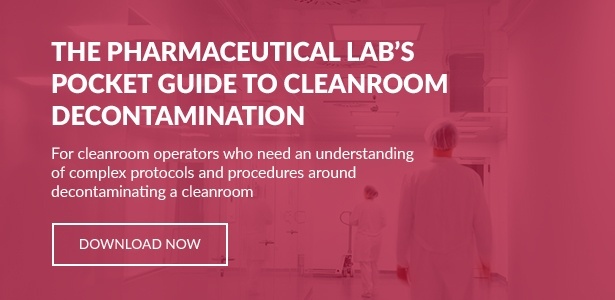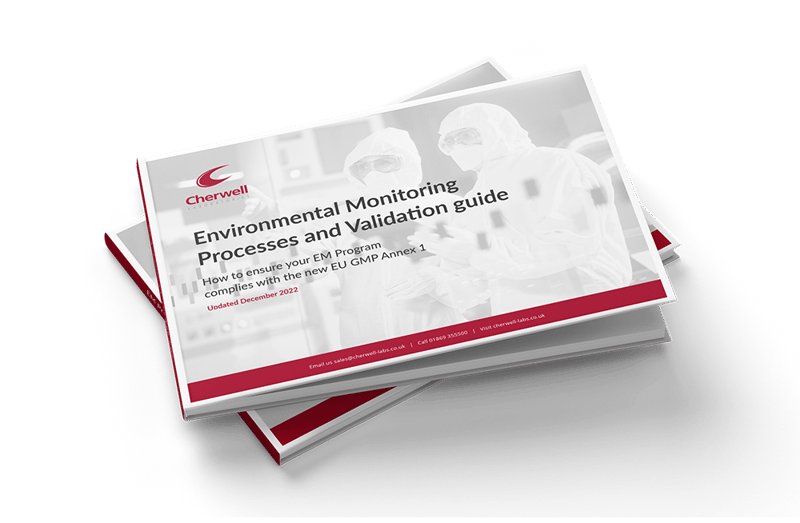Our first edition of Recommended Research Papers for Cleanroom Operators gathered quite an audience. Thanks to each of you who responded to our call for recommendations for this and future editions.
Apart from the enticement of getting the latest on industry favourite Tim Sandle’s work, the scope of suggestions seems proof of a common hunger for access to summaries of the most important industry insights. For this reason, and also because I admittedly enjoy the chance to peruse the most obscure research angles for valuable insights, I’ve decided to put together the next edition sooner rather than later.
My short list for this edition included studies on everything from the novel process indicators for rapid monitoring of hydrogen peroxide decontamination processes, to as far left-field as an in-plant 3D positioning system using point cloud data for remote decontamination machine.
My final selection is a collection of five resources (including one by Tim Sandle) that I recommend for everyone involved in pharmaceutical manufacturing, particularly those working in cleanroom environments. I hope you enjoy!
A Year in the Life of a Contaminated Heater-Cooler Unit with Mycobacterium chimaera?
For my sins, in a previous job I was the “responsible person” for ensuring the site water system was free of pathogens. This study shows how quickly a biofilm can form in HCUs and the importance of a thorough decontamination regime. The choice of disinfectant was proven to be a crucial element, especially where there may be chemical incompatibilities, such as peracetic acid and copper. The conclusion of the research was that more work needs to be done to reduce the build-up of biofilms in these types of systems. This is a constant challenge in small and large water systems alike.
Abstract
Objective:
Heater-cooler units (HCUs) have been shown to be a source of Mycobacterium chimaera infections. For the past year, weekly water samples have been taken from HCUs used at University Hospitals Birmingham (UHB) NHS Foundation Trust. We report the microbial contamination of the HCUs over a year detailing the decontamination regimes applied at UHB to reduce the microbial load.
Design:
Observational study
Setting:
UHB is a tertiary referral teaching hospital in Birmingham, United Kingdom, that provides clinical services to nearly 1 million patients every year. The UHB Cardiac department is one of the largest in the United Kingdom and provides treatment for adult patients with a wide range of cardiac diseases.
Methods:
Water samples taken from HCUs used at UHB for cardiopulmonary bypass surgery were sampled over a year to determine the number of microorganisms by membrane filtration. Various decontamination processes were employed throughout the year.
Results:
Varying total viable counts containing a wide variety of microorganisms were obtained from water inside the HCUs. No M. chimaera were isolated after replacement of the HCU internal tubing. Stringent decontamination regimes resulted in degradation of the HCUs and increased TVCs after several months.
Conclusion:
More work is required to ensure effective decontamination processes to reduce the microbial load within the HCUs. Our studies indicate that weekly water sampling for TVC will be required indefinitely to monitor the water quality in these units as well as regular replacement of the tubing to control the build-up of biofilm.
Source references and availability:
Authors: Mark I Garvey, Craig W Bradley, James T Walker (Public Health England)
Publication: Infection Control and Hospital Epidemiology
Published: May 2017
Available from ResearchGate.net
Volunteer trials of a novel improvised dry decontamination protocol for use during mass casualty incidents as part of the UK’S Initial Operational Response (IOR)
Although we usually review papers that are directly associated with cleanroom or pharmaceutical microbiology, this paper caught my eye because of personal interest and past experience.
In my previous role, I was part of the site “emergency response team”. Part of the job was to clean up chemical and biological spillages. This paper highlights the benefit of “dry decontamination” i.e. with blue roll or other absorbent materials and also the technique used to clean the skin after exposure. In a real scenario, we must accept that wet decontamination may not be readily available and that dry decontamination would be of benefit.
Abstract
Previous studies have demonstrated that rapid evacuation, disrobing and emergency decontamination can enhance the ability of emergency services and acute hospitals to effectively manage chemically-contaminated casualties. The purpose of this human volunteer study was to further optimise such an “Initial Operational Response” by (1) identifying an appropriate method for performing improvised skin decontamination and (2) providing guidance for use by first responders and casualties. The study was performed using two readily available, absorbent materials (paper towels and incontinence pads). The decontamination effectiveness of the test materials was measured by quantifying the amount of a chemical warfare agent simulant (methyl salicylate) removed from each volunteer’s forearm skin. Results from the first study demonstrated that simulant recovery was lower in all of the dry decontamination conditions when compared to matched controls, suggesting that dry decontamination serves to reduce chemical exposure. Blotting in combination with rubbing was the most effective form of decontamination. There was no difference in effectiveness between the two absorbent materials. In the following study, volunteers performed improvised dry decontamination, either with or without draft guidelines. Volunteers who received the guidance were able to carry out improvised dry decontamination more effectively, using more of the absorbent product (blue roll) to ensure that all areas of the body were decontaminated and avoiding cross-contamination of other body areas by working systematically from the head downwards. Collectively, these two studies suggest that absorbent products that are available on ambulances and in acute healthcare settings may have generic applicability for improvised dry decontamination. Wherever possible, emergency responders and healthcare workers should guide casualties through decontamination steps; in the absence of explicit guidance and instructions, improvised dry decontamination may not be performed correctly or safely.
Source references and availability:
Authors: Richard Amlôt (Public Health England), Holly Carter (Public Health England), Lorna Riddle, Rob Chilcott(University of Hertfordshire).
Publication: PLoS ONE 12(6)
Published: June 2017
Available from: ResearchGate.net
Characterisation of Staphylococcus epidermidis strains isolated from industrial cleanrooms under regular routine disinfection
I particularly enjoyed reading this paper, mainly because it was an eye-opener regarding the properties of Staphylococcus epidermidis, the most common of the skin commensals and EM isolates. What I didn’t know was that some strains could form biofilms and some expressed the gene that could render S.epidermidis resistant to Quanterary Ammonium Compounds (QAC’s), one of the most common cleanroom disinfectants. All the same, only a low percentage of S.epidermidis strains isolated had genes associated with biofilm formation and/or resistance to QAC’s.
While it’s important for pharmaceutical manufacturers to take note of this study, it’s probably of greater importance for those working in food processing environments where cleaning is more frequent.
Abstract
Aims:
The purpose of this study was the genotypic and phenotypic characterization of 57 strains of Staphylococcus epidermidis isolated from cleanroom environments, based on their biofilm formation and antimicrobial resistance profiles.
Methods and results:
Biofilm formation was investigated using real-time PCR (icaA, aap, bhp genes), the Congo red agar method, and the crystal violet assay. The majority of the strains (59.7%; 34/57) did not form biofilms according to the crystal violet assay, although the biofilm-associated genes were present in 94.7% (54/57) of the strains. Of the biofilm formers (40.4%; 23/57), 39.1% (9/23) have been identified as strong biofilm formers (>4× crystal violet absorbance cut-off). Resistance to a commercial disinfectant and its quaternary ammonium active component, didecyl-dimethyl-ammonium chloride (DDAC), was determined according to minimum inhibitory concentrations and presence of the qac (quaternary ammonium compound) genes. More than 95% (55/57) of the Staph. epidermidis strains had the qacA/B and qacC genes, but not the other qac genes. The minimum inhibitory concentrations for the disinfectant and DDAC varied among the Staph. epidermidis strains, although none were resistant. Conclusions: While 59.6% of the Staph. epidermidis strains did not form biofilms and none were resistant to DDAC, more than 94% had the genetic basis for development of resistance to quaternary ammonium compounds, and among them at least 14.0% (8/57) might represent a high risk to cleanroom hygiene as strong biofim formers with qacA/B and qacC genes.
Significance and impact of study:
To assure controlled cleanroom environments, bacterial strains isolated from cleanroom environments need to be characterized regularly using several investigative methods. This article is protected by copyright.
Source references and availability:
Authors: U. Ribič, Anja Klancnik (University of Ljubljana), Barbara Jeršek University of Ljubljana).
Publication: Journal of Applied Microbiology
Published: February 2017
Available from: ResearchGate.net
Antimicrobial copper surfaces in hospitals
This is another article with a personal connection. Many moons ago when I was at university, one of my summer jobs was as a hospital cleaner! I can assure you it’s not a pleasant job, but it remains a critical service.
In this article, Tim Sandle extols the virtues of the anti-microbial properties of copper and its various alloys and encourages their use in the hospital environment. From personal experience, a cleaner can only do so much. Where anti-microbial materials are available, they should be used to reduce the chance of hospital acquired infections such as MRSA. In the laboratory as well, I have seen copper lined incubators in cell culture labs where protecting the cell culture is of paramount importance.
Introduction:
Infection control in hospitals is of paramount importance in order to reduce the potential for healthcare associated infections (an infection whose development is favoured by a healthcare environment.) Infection control is concerned with eliminating as many pathogenic microorganisms as possible and limiting their transfer. This covers a range of measures from handwashing, disinfection, selection of antimicrobial drugs, the treatment of surfaces and so on (1). With surfaces, many types of microorganisms can persist for extended periods of time (some organisms can survive for longer than thirty days on standard surfaces) (2); consequently touch-surfaces represent risk spots for pathogen transmission. In the hospital setting, some types of key equipment can be manufactured with antimicrobial touch components with the aim of making the surfaces self-disinfecting. For this a recent trend in the hospital setting has been to revisit the inherent antimicrobial properties of certain metals. A prominent example is the use, or incorporation of, copper (3).
Source references and availability:
Authors: Tim Sandle
Publication: The Clinical Services Journal, 16 (6): 47-51
Published: June 2017
Available from: The website of the Clinical Services Journal
Subscribe for Updates on our Recommended Research Papers
That makes another round-up of our recommended research papers. I hope you’ve enjoyed reading the collection as much as I did in putting it together! If you did, make sure you subscribe to our blog updates at the bottom of this page to receive notification of future posts. As always, we invite your contributions for our next edition of recommended research papers relating to pharmaceutical manufacturing. You can send your suggestions by popping us a message over here.







